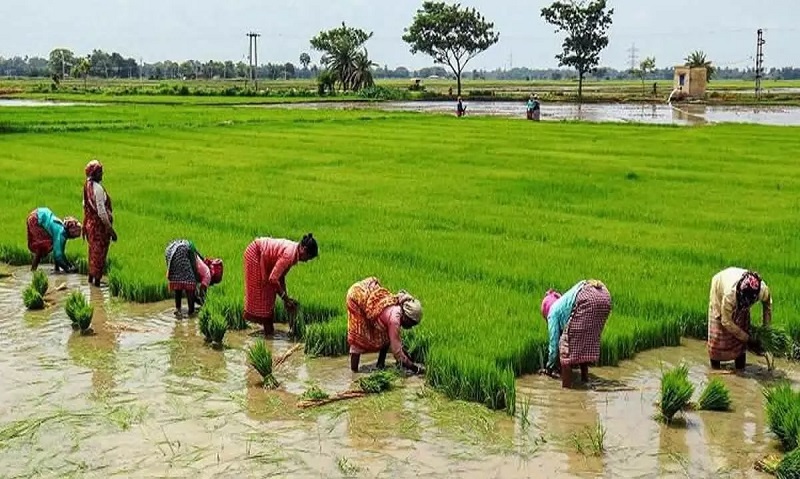Government Raises Minimum Support Price for Paddy, Boosting Farmers’ Income
In a move aimed at supporting farmers and stimulating agricultural growth, the Indian government announced a substantial increase in the minimum support price (MSP) for paddy. The Cabinet Committee on Economic Affairs (CCEA), led by Prime Minister Narendra Modi, approved a raise of Rs 143, bringing the MSP for paddy to Rs 2,183 per quintal for the 2023-24 crop year (July-June). This decision is expected to encourage farmers to expand the cultivation of paddy and subsequently bolster their income.
The hike in MSP for all mandated Kharif crops signifies the government’s commitment to the welfare of agricultural communities. The Ministry of Food and Consumer Affairs, led by Minister Piyush Goyal, highlighted the significance of this increase during a media briefing. Goyal stated, “The increase in MSP of Kharif crops for this year is the highest compared to the previous years,” underscoring the government’s dedication to supporting the farming sector.
The revised MSP for paddy encompasses both common and ‘A’ grade varieties. The common grade variety of paddy saw a notable increase of Rs 143, resulting in an MSP of Rs 2,183 per quintal for the 2023-24 crop year. Similarly, the ‘A’ grade variety experienced an identical hike, raising its MSP to Rs 2,203 per quintal. These adjustments in support prices aim to empower farmers and improve their livelihoods.
The government’s efforts to address the needs of farmers come at an opportune time, with the retail inflation showing a declining trend. By ensuring higher MSPs, the government is enabling farmers to benefit from improved profitability. These measures demonstrate the government’s commitment to uplift the agricultural sector and foster sustainable growth.
Furthermore, it is worth noting that the highest percentage increase in MSP was observed in moong, with a substantial rise of 10.4 percent. The MSP for moong for the 2023-24 crop year stands at Rs 8,558 per quintal, a notable increase from the previous year’s Rs 7,755 per quintal. This exceptional increase in MSP for moong reaffirms the government’s focus on diversifying and supporting a range of crops.
Paddy, being the primary Kharif crop, plays a pivotal role in India’s agricultural landscape. Typically sown at the onset of the southwest monsoon, paddy cultivation is crucial for ensuring food security and promoting rural prosperity. Despite the evolving El Nino conditions, the India Meteorological Department (IMD) has projected a normal monsoon for the June-September period, providing a favorable environment for paddy cultivation.
While the monsoon has experienced a delay in its onset date of June 1 in Kerala, farmers across the country can look forward to a supportive policy framework and enhanced MSPs that will enable them to thrive in the agricultural sector. The government’s proactive approach in uplifting the farming community through measures like increased MSPs sets the stage for a promising future in Indian agriculture.
This article includes sponsored content. The views expressed are those of the sponsor and do not necessarily reflect the official policy or position of our publication.

